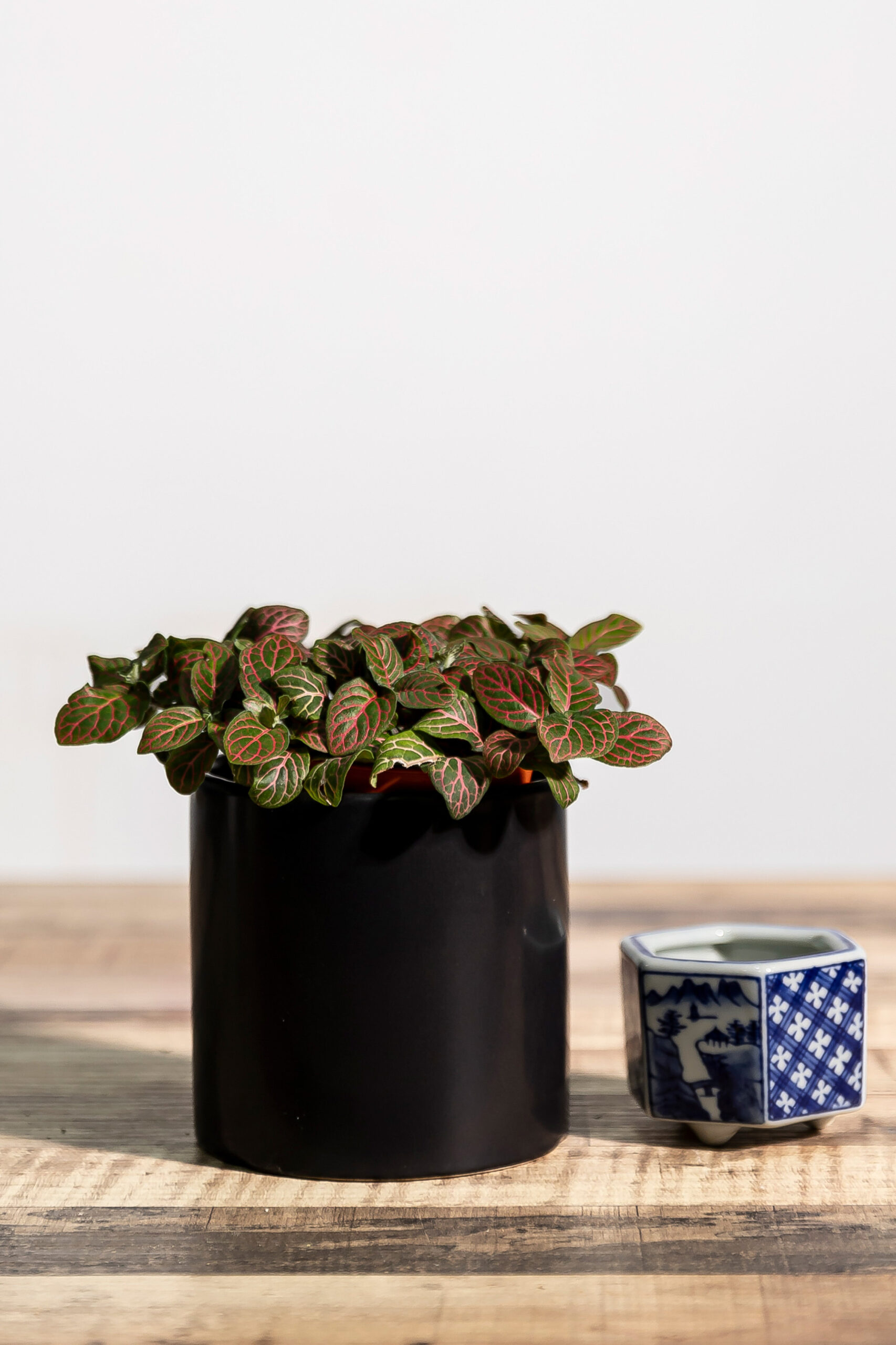Fittonia is a captivating houseplant that has been gaining popularity due to its vibrant foliage and relatively easy care requirements. Often referred to as the “nerve plant” or “mosaic plant,” Fittonia is a tropical plant native to South America. Its unique feature is its network of veins that stand out in contrasting colors, creating a mesmerizing mosaic effect.
A Kaleidoscope of Colors
One of the most striking aspects of Fittonia is its diverse range of foliage colors. From deep emerald green to fiery reds and vibrant pinks, Fittonia offers a palette of hues to suit any interior style. The veins, which are typically white or red, provide a stark contrast against the base color, enhancing the plant’s visual appeal.

A Low-Maintenance Gem
Despite its stunning appearance, Fittonia is surprisingly easy to care for. It thrives in bright, indirect light and prefers consistently moist soil. Regular misting or placing the pot on a pebble tray filled with water can help maintain optimal humidity levels. While Fittonia is not tolerant of drought, it’s important to avoid overwatering, as this can lead to root rot.
A Versatile Houseplant
Fittonia’s compact size and versatility make it suitable for a variety of settings. It can be grown as a trailing plant in hanging baskets, or as a ground cover in terrariums and dish gardens. Additionally, Fittonia can be paired with other plants to create stunning arrangements. Its vibrant colors and unique foliage texture can add a touch of tropical flair to any room.
A Plant with Personality
Beyond its aesthetic appeal, Fittonia has a playful personality. Its delicate leaves seem to dance in the breeze, creating a sense of movement and life. The contrasting colors and intricate vein patterns can spark curiosity and imagination. Fittonia is a plant that invites you to slow down, appreciate its beauty, and connect with nature.
A Gift That Keeps on Giving
Whether you’re a seasoned plant collector or a beginner gardener, Fittonia is a wonderful addition to your indoor garden. Its low-maintenance nature, vibrant colors, and unique personality make it a truly special houseplant. As a gift for a loved one or a treat for yourself, Fittonia is sure to bring joy and inspiration to your home.
Fittonia, also known as nerve plant or mosaic plant, is a low-maintenance houseplant with striking foliage that can add a pop of color to any room. Its vibrant veins and intricate patterns make it a popular choice among plant enthusiasts. While some may be intimidated by the thought of caring for a houseplant, Fittonia is surprisingly easy to maintain.
Caring for Fittonia
1. Lighting: Fittonia thrives in bright, indirect light. Avoid placing it in direct sunlight, as this can scorch its delicate leaves. A spot near a window that receives filtered light is ideal.
2. Watering: Fittonia prefers its soil to be consistently moist but not soggy. Allow the top inch of soil to dry out slightly between waterings. Overwatering can lead to root rot, so be careful not to drown your plant.
3. Humidity: Fittonia appreciates high humidity levels. To increase humidity around your plant, you can:
4. Temperature: Fittonia prefers warm temperatures between 65°F and 80°F. Avoid placing it near cold drafts or heat sources.
5. Fertilizing: Feed your Fittonia a balanced liquid fertilizer once a month during the growing season (spring and summer).
6. Pruning: Regular pruning can help maintain the shape and size of your Fittonia. Simply pinch off any leggy or unwanted growth.
Propagating Fittonia
Fittonia is easy to propagate from cuttings. To propagate your plant, follow these steps:
1. Take a cutting: Cut a stem about 3 inches long from your Fittonia plant. Make sure the cutting has at least two nodes.
2. Remove the bottom leaves: Remove the bottom leaves from the cutting to prevent them from rotting.
3. Plant the cutting: Plant the cutting in a small pot filled with well-draining potting mix.
4. Water: Water the cutting thoroughly and place it in a warm, humid location.
5. Wait: Your Fittonia cutting should root within a few weeks. Once the cutting has rooted, you can repot it into a larger pot.
Common Pests and Diseases
Fittonia is susceptible to a few common pests and diseases, including:
Mealybugs: These tiny, cottony insects can infest the plant’s leaves and stems. You can remove them with a cotton swab dipped in rubbing alcohol.
Fittonia Varieties
There are many different varieties of Fittonia, each with its own unique leaf color and pattern. Some popular varieties include:
Fittonia albivenis: This variety has dark green leaves with striking white veins.
Fittonia is a beautiful and low-maintenance houseplant that can add a touch of color to any home. With proper care, your Fittonia will thrive and bring joy for years to come.
 Udento Lifestyle & Health
Udento Lifestyle & Health




